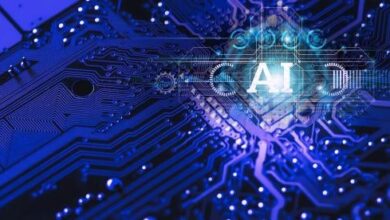Heightened Expectations Push CISOs in Face of Artificial Intelligence Challenges

Security Leadership’s Shifting Battle with AI Adoption
Trellix, in association with the Center for Strategic and International Studies (CSIS), unveiled a revealing study analyzing the challenges that Chief Information Security Officers (CISOs) are facing due to the rapid evolution of ‘Generation AI’ (GenAI) within the cybersecurity domain. The report, resulting from a survey of 500 North American cybersecurity executives, highlights the heightened vigilance and strategic adjustments CISOs must adopt amid a climate of increasing cyber threats.
Charting the Course in a New Era of Cybersecurity
In the vanguard of organizational safety, CISOs are under heightened pressure to manage the balance between AI opportunities and threats. They act as guardians over complex technological transformations. Consequently, this intensifies their responsibility, especially as the cybersecurity skills gap widens and cyberattacks surge—an alarming 99% of surveyed executives reported experiencing cyberattacks within the previous six months.
Empowering Defenses with GenAI
Despite the challenges, CISOs also perceive GenAI as a formidable ally against cyber threats, with a majority believing in its potential to bolster defenses, particularly against ransomware. To reap the benefits while mitigating risks, nearly half of the surveyed CISOs are taking proactive steps to govern their AI tools through specialized committees and security frameworks.
Additionally, the implementation of GenAI is becoming a crucial factor for security operations staffing, with many agreeing that it could play a role in resolving personnel shortages. It’s estimated that GenAI could increase workforce productivity by 38%.
Navigating the Regulatory Landscape
As AI regulation remains fluid, nearly all CISOs are calling for policymakers to establish regulatory standards. Clear rules and compliance directives are necessary to allow organizations to create scalable, global solutions that manage the liabilities associated with advanced AI technologies.
The findings of the report will be further discussed in an upcoming live event hosted by Trellix and CSIS, underscoring Trellix’s commitment to addressing CISO needs and promoting cybersecurity best practices.
For further details on Trellix’s work and the full report, visit the Trellix website.
Important Questions and Answers:
– What are the key challenges faced by CISOs in adopting AI?
CISOs face the challenge of managing the balance between harnessing AI for enhancing cybersecurity measures and mitigating the potential risks that AI technologies can pose. They must also contend with a widening cybersecurity skills gap and an increase in cyberattacks.
– What role does AI play in cybersecurity staffing?
AI, specifically GenAI, can significantly impact security operations staffing by potentially resolving personnel shortages and increasing workforce productivity. The initiated report suggests a workforce productivity increase of 38% due to GenAI.
– Why is regulation important for AI in cybersecurity?
Nearly all CISOs agree on the importance of AI regulation. Clear rules and compliance directives are essential for organizations to develop scalable, global solutions while also managing the liabilities and ethical considerations associated with advanced AI technologies.
Key Challenges and Controversies:
– Balancing Innovation with Security: While AI offers numerous opportunities for innovation in cybersecurity, it also introduces new security risks, leading to an ever-changing threat landscape that CISOs must navigate.
– Ethical Implications: The use of AI in cybersecurity raises ethical considerations around privacy, surveillance, and the possibility of AI being used for malicious purposes.
– Regulatory Uncertainty: Currently, AI regulation is still in flux, which creates challenges for CISOs who need clear guidelines to ensure compliance and effective risk management.
– Skill Gap: The cybersecurity field already faces a significant skills shortage, and new AI-driven technologies only increase the demand for skilled professionals who can manage and counteract AI threats.
Advantages and Disadvantages:
– Advantages:
– AI can help improve the efficiency and effectiveness of cybersecurity defenses, particularly against sophisticated threats like ransomware.
– Automation of routine security tasks by AI can help bridge the skills gap by freeing up human resources for more strategic tasks.
– AI can provide predictive analytics, allowing organizations to better anticipate and prevent potential cyberattacks.
– Disadvantages:
– AI systems may be vulnerable to new types of AI-specific threats, including adversarial attacks that can deceive machine learning models.
– Overreliance on AI could lead to complacency and an underappreciation of nuanced threats that require human judgement and intervention.
– Transparency and accountability may be compromised as decision-making processes become more automated and complex.
To research more about the challenges and developments in cybersecurity and AI, you can visit the following link: Trellix.
Please note that this response is based on inferred topics from the article provided, as no specific details are included in the given text.



